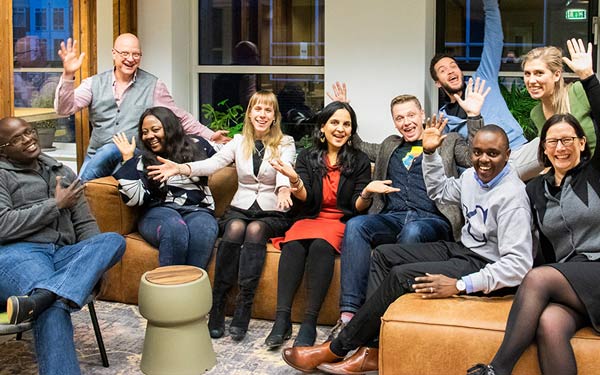Conclusion
Photo: © Oleg.0 / Depositphotos.com
Crime and Justice Innovation in Kenya / Conclusion
In this report, we have aimed to examine how justice innovation could support Kenyan criminal justice. From the baseline, we can see that new solutions are needed. Crime in Kenya is a big problem: three in four of the over 6000 citizens who we interviewed had dropped their criminal case, or were waiting for their resolution. One in four do not even try to resolve their problem. This is despite the fact that victims report that experiencing crime has a big impact on their well-being. While succeeding in adjudication, the current structure has not been able to tackle low resolution rates or address all the restitutive and restorative dimensions of criminal justice needs. Innovative thinking and working methods can help to bring solutions to the people. This is not a straightforward task: justice innovation and public-private partnerships are still taking only tentative steps in scaling up. New ways of thinking are needed. The recently published AJS policy is a step in this direction, opening up possibilities for more innovative approaches to preventing and resolving crime.
What is working?
From the innovation examples, we see that many already-working innovations have started or operate at the grassroots level and are responding to the needs of targeted communities. Some well-known examples include Nyumba Kumi, which is anchored at the household level in communities across Kenya; Dandora Transformation League, which started in the Dandora region; and Kituo Cha Sheria Legal Advice Centre, which started back in the 1970s by working from under a tree in the Ngara neighbourhood of Nairobi. What these examples have in common is that they all respond to the daily, regional needs of people.
Hence, many innovations tap into informal, local practices. The justice providers agreed with the added value in this: supporting informal justice mechanisms can bring the focus back from distant courtrooms to having resolutions right where people need them. While in criminal justice formal mechanisms do play an important role, the judiciary is also exploring alternative mechanisms through the AJS policy. Informal justice can also play a role in preventing crime or fact-finding after the crime, as we demonstrated in the work of the 160 Girls Project or Mulika Kenya.
Traditional, informal justice can be paired with modern technology solutions. Leveraging widely accessible technology such as SMS, radio, and the internet, has proven successful in the cases of KITUO’s M-Haki, SNA-K, and 160 Girls Project. While they have used technology to reach and advise people with legal problems, other innovations such as Mulika Kenya and Ushahidi have leveraged this technology to facilitate bottom-up reporting through secure communication lines.
What all the innovations we examined have in common is that they strive to be easy to reach and easy to understand. Innovation’s potential seems to lie in streamlining existing processes that already work well and making new justice services available and accessible.
What challenges could be addressed next?
The criminal justice workers who we interviewed outlined challenges they experience in their work, which could be addressed with an innovative mindset and newly-found solutions. They wanted to encourage actors in criminal justice and justice innovation to use their creative thinking in finding solutions that streamline processes and support people-centred responses.
Particularly in the light of Covid-19, the justice providers called for improvement in technological literacy and infrastructure both in formal and informal justice systems. It was mentioned that there are either no streamlined and/or secure online communication platforms in place, or there is no technological literacy to utilise the systems to their full potential. Another area where the justice providers wanted to see improvement was help in responding to crime and reckoning with its consequences. While many innovations are already delivering legal aid or knowledge about procedures, the justice providers saw there to be more room for improvement in guiding people through criminal justice procedures. This guidance can include not only information about the law, but also on different justice providers, their rights and responsibilities, and what the parties can expect from various justice processes. Incorporating mediation into criminal justice procedures, when appropriate, could be one of the improvements. The justice providers follow international trends when they recommend to explore restorative justice. This includes victim-offender mediation, rehabilitating and reintegrating offenders, and appropriately compensating victims for the harm they have suffered. They saw the way forward towards more restorative approaches to be through improved coordination between formal and informal justice providers. While informal and formal justice systems both have strengths, both also have their unique challenges. Innovative approaches that support the AJS policy by helping the formal and informal systems work better together could help in improving the crime response for people, so that everyone is able to find the most suitable help for their situation. To improve both systems, the justice providers interviewed suggested capacity-building and skills training in particular, alongside initiatives such as interpretation and improved monitoring of agreements.
From idea to innovation?
Innovating is hard work, which does not happen overnight. In access to justice, the importance of private-public partnerships is highlighted. This report has aimed to shed light on challenges in criminal justice that might be addressed by new solutions. As we can see from the reflections of justice providers, solving problems locally is often preferable. We encourage the private sector to explore their options within the criminal justice system, and encourage the public sector to welcome new ways of thinking. Where to start? Identifying the justice outcomes that people need is one way to supports meaningful, evidence-based innovations. Continuously improving these innovations through outcome monitoring helps to ensures that they respond and adapt to a rapidly changing society.
Keep exploring

The Justice Accelerator is HiiL’s innovation programme that funds, trains and scales a cohort of justice startups each year. Read more

The data on this page comes from a Justice Needs and Satisfaction survey conducted in 2017. We interviewed more than 6 000 randomly selected adults. Read more

Explore these how-to-steps of solving disputes and creating fair outcomes. From these, you can build effective interventions for any justice problem or crime Read more
